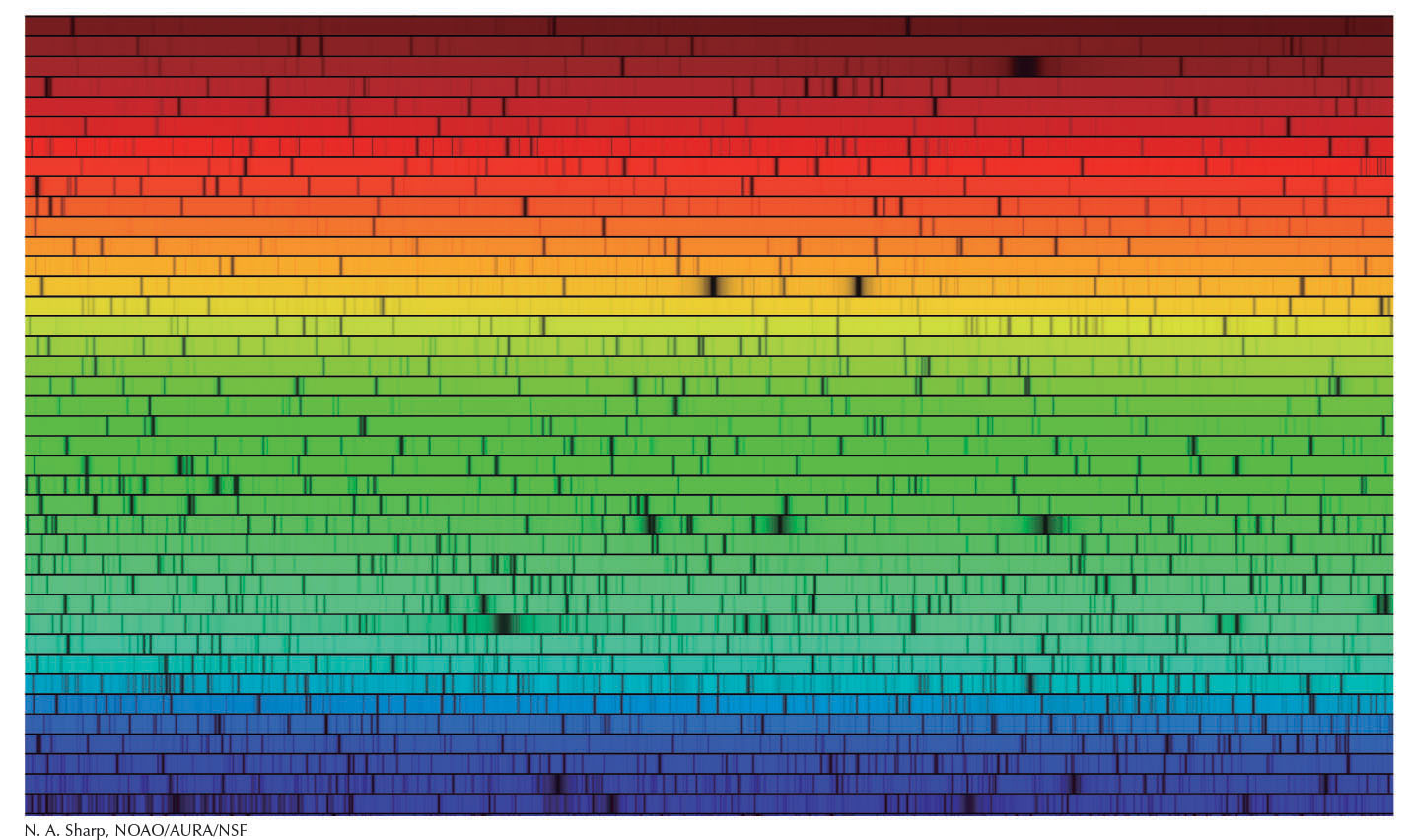105
CHAPTER 4

Atomic Physics and Spectra
WHAT DO YOU THINK?
 Which is hotter, a “red-hot” or a “blue-hot” object?
Which is hotter, a “red-hot” or a “blue-hot” object?
 What color does the Sun emit most brightly?
What color does the Sun emit most brightly?
 How can we determine the age of space debris found on Earth?
How can we determine the age of space debris found on Earth?
Answers to these questions appear in the text beside the corresponding numbers in the margins and at the end of the chapter.
106
“Astar, extrasolar planet, galaxy, or interstellar gas cloud was discovered yesterday,” is a statement that is true virtually every day of the year. The first thing that astronomers want to know about that newly discovered object is—everything. Much of this information is gained by focusing electromagnetic radiation from the object through a prism or similar device that separates its wavelengths, creating a spectrum. For astronomers, visible light is only the proverbial tip of the electromagnetic radiation iceberg. While probing other wavelengths, scientists in the past two centuries have discovered that most objects in space emit varying amounts of all types of electromagnetic radiation. This spectral analysis, along with information gleaned from the shapes and locations of objects, provides us with virtually all of the information we have about the cosmos. Furthermore, these observations provide the data needed to confirm the models of astronomical objects that scientists have developed.
In particular, you will see in this chapter that the resulting spectrum enables us to learn a variety of the physical properties of the object, including its surface temperature, chemical composition, mass, size, rotation rate, motion through space, and sometimes its distance from Earth.
We begin this ongoing adventure of discovery by discussing the nature of matter and how it interacts with electromagnetic radiation. In subsequent chapters, we consider related issues, such as why stars shine (that is, emit electromagnetic radiation), where different elements found on Earth and throughout the universe come from, and why objects have the motions they do, among many other questions.
In this chapter you will discover
 the origins of electromagnetic radiation
the origins of electromagnetic radiation
 the structure of atoms
the structure of atoms
 that stars with different surface temperatures emit different intensities of electromagnetic radiation
that stars with different surface temperatures emit different intensities of electromagnetic radiation
 that astronomers can determine the chemical compositions of stars and interstellar clouds by studying the wavelengths of electromagnetic radiation that they absorb or emit
that astronomers can determine the chemical compositions of stars and interstellar clouds by studying the wavelengths of electromagnetic radiation that they absorb or emit
 how to tell whether an object in space is moving toward or away from Earth
how to tell whether an object in space is moving toward or away from Earth